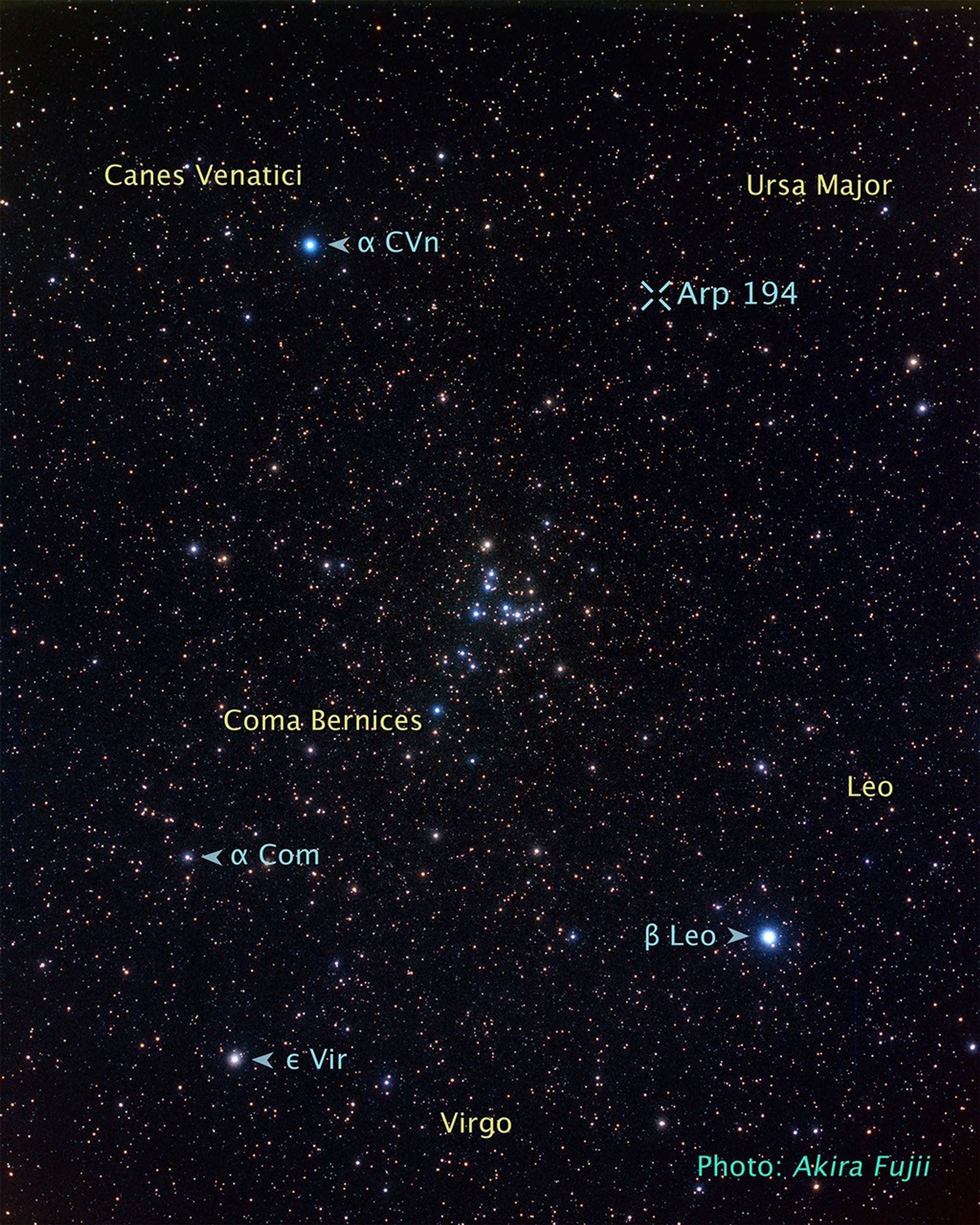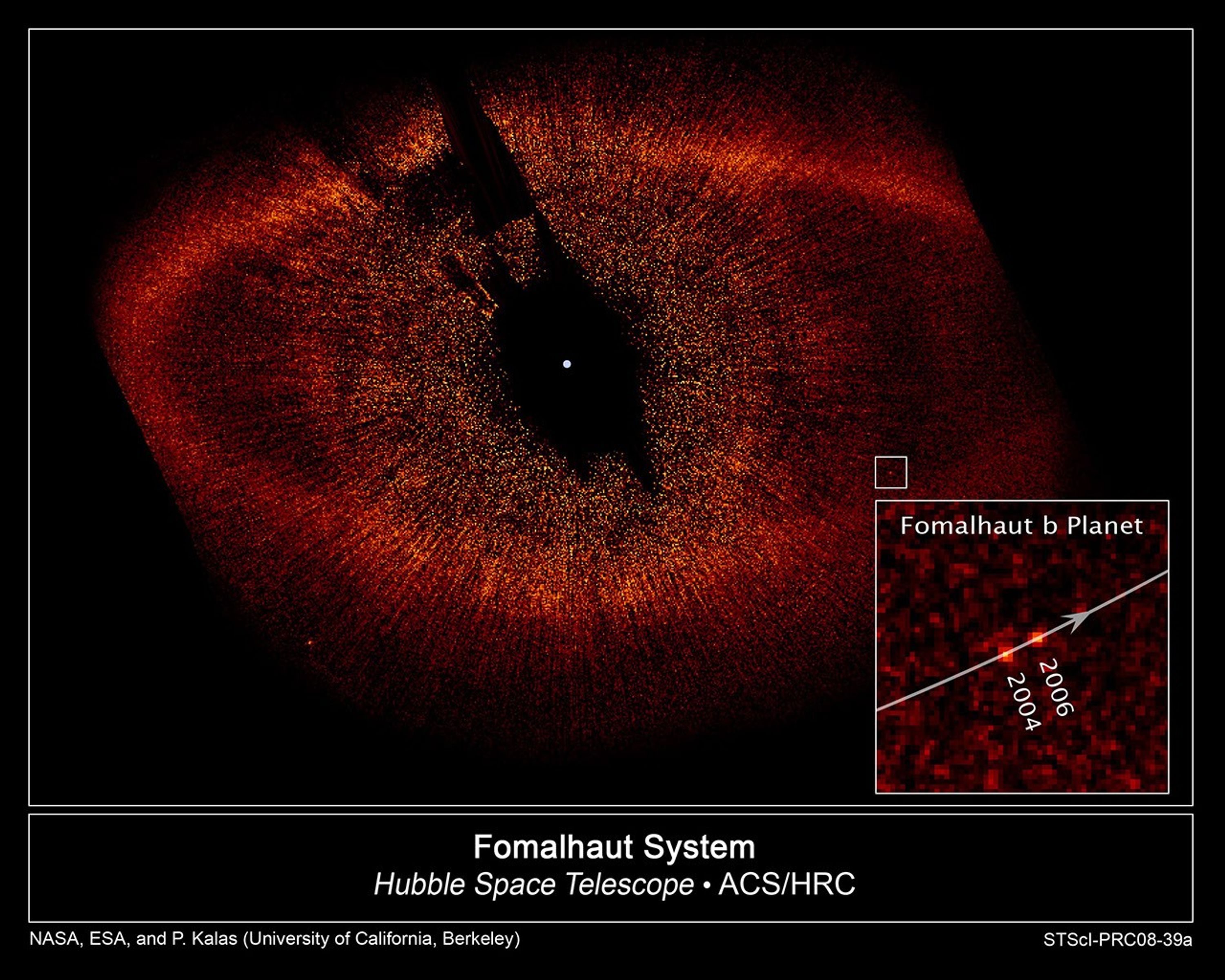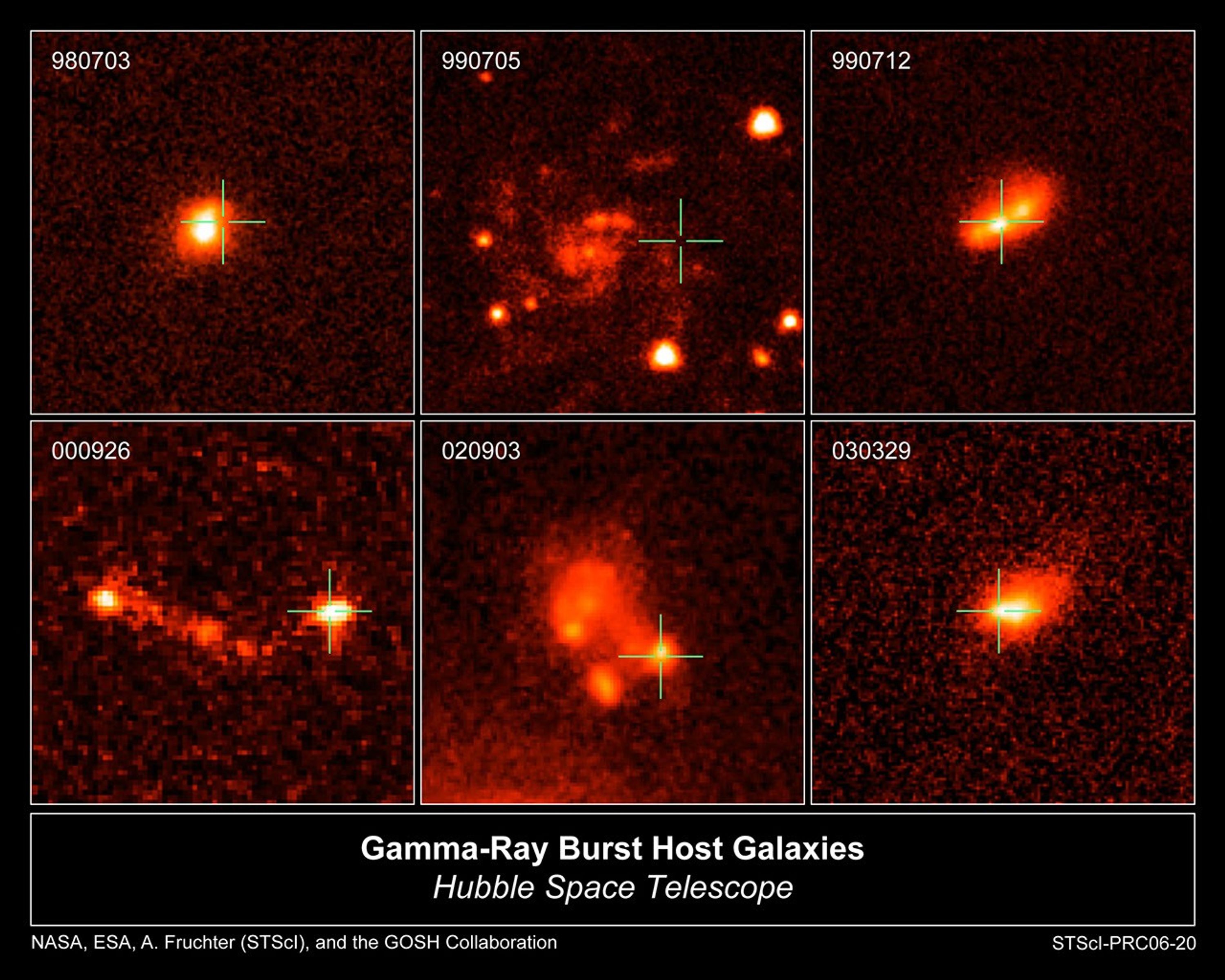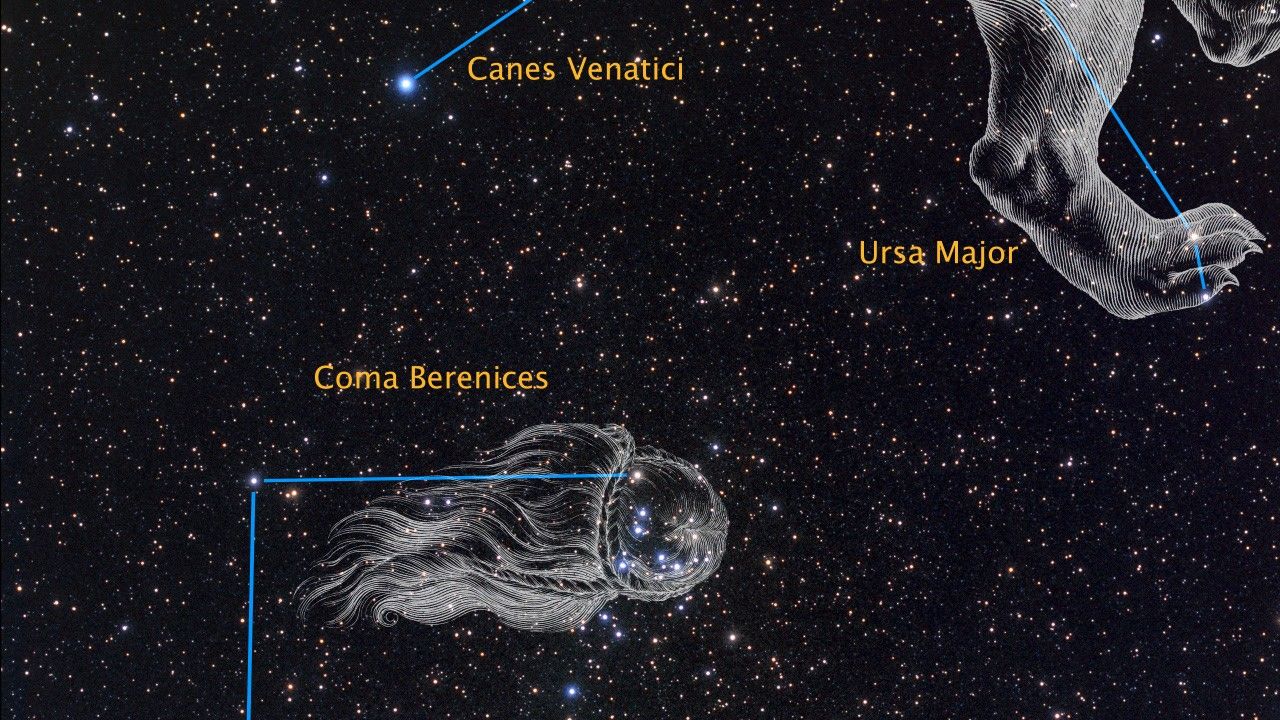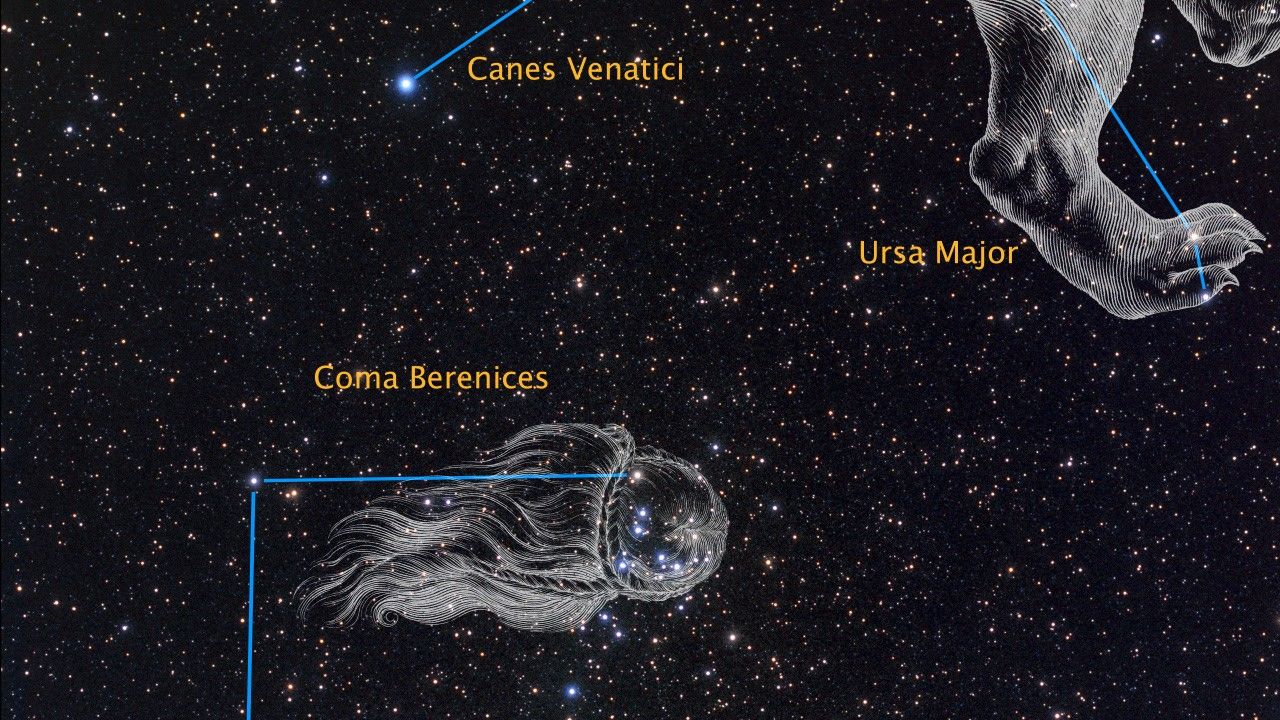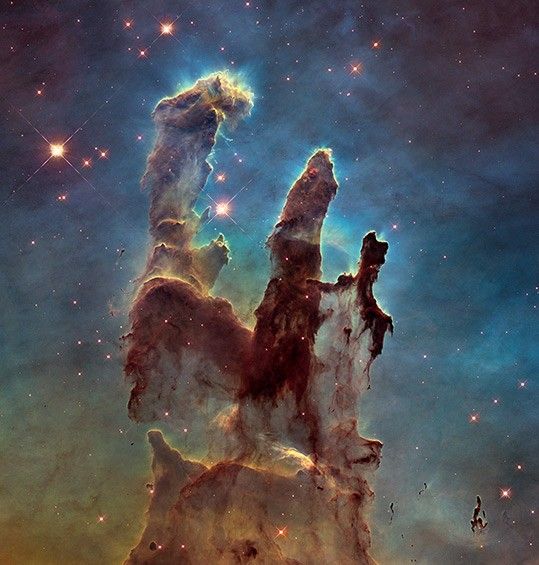Background Information: Hubble's Top Science Findings
(An interactive version of this document is available in the "Related Links" section of this release.)
When Galileo used his homemade telescope 400 years ago to view mountains on the Moon, satellites circling Jupiter, and a myriad of stars in our Milky Way galaxy, he launched a revolution that changed our view of an Earth-centered universe. The launch of NASA’s Hubble Space Telescope aboard the space shuttle Discovery 19 years ago initiated another revolution in astronomy. For the first time, a large telescope that sees in visible light began orbiting above Earth’s distorting atmosphere, which blurs starlight and makes images appear fuzzy. Astronomers anticipated great discoveries from Hubble. The telescope has delivered as promised and continues serving up new discoveries. Astronomers and astrophysicists using Hubble data have published more than 7,500 scientific papers, on topics from the solar system to the very distant universe. The following list highlights some of Hubble’s greatest achievements.
Shining a Light on Dark Matter
Astronomers studying titanic collisions between clusters of galaxies have collected strong evidence that dark matter exists.
Their observations of the galaxy cluster 1E0657-56, also known as the “Bullet Cluster,” found that dark matter and normal matter were pulled apart by the smashup between two groupings of galaxies. This study was the first direct detection for dark matter, an invisible substance that cannot be detected by telescopes. Dark matter makes up most of the total mass of the universe and forms its underlying structure. Dark matter’s gravity interacts with normal matter, such as gas and dust, allowing it to build up into stars and galaxies.
Astronomers infer dark matter’s existence by measuring its gravitational influence. They measured the way in which the Bullet Cluster warped or distorted space, a phenomenon called gravitational lensing, where gravity from the clusters distorts light from background galaxies. Astronomers found that dark matter and normal matter were pulled apart by the tremendous collision of the two clusters of galaxies. Hubble teamed up with the Chandra X-ray Observatory, the European Southern Observatory’s Very Large Telescope, and the Magellan optical telescopes to make the discovery.
In another Hubble gravitational lensing study of the galaxy cluster Cl 0024+17, astronomers discovered a ghostly ring of dark matter that formed long ago during a clash between two groups of massive galaxies. Astronomers have long suspected that such clusters would fly apart if they relied only on the gravity from their visible stars. The ring is a ripple of dark matter that was pulled apart from normal matter during the collision.
Computer simulations of galaxy cluster collisions show that when two clusters smash together, the dark matter falls to the center of the combined cluster and sloshes back out. As the dark matter moves outward, it begins to slow down under the pull of gravity and pile up. The observations of Cl 0024+17 allowed astronomers to study the way in which dark matter responds to gravity.
Astronomers also used Hubble to make the first three-dimensional map of dark matter, considered the construction scaffolding of the universe. They constructed the map by using Hubble to measure the shapes of half a million faraway galaxies.
The new map provides the best evidence to date that normal matter, largely in the form of galaxies, accumulates along the densest concentrations of dark matter. The map, which stretches halfway back to the beginning of the universe, reveals a loose network of filaments that grew over time and intersect in massive structures at the locations of galaxy clusters.
An Accelerating Universe
By witnessing bursts of light from faraway exploding stars, Hubble helped astronomers discover dark energy. This mysterious, invisible energy exerts a repulsive force that pervades our universe.
Several years later, Hubble provided evidence that dark energy has been engaged in a tug of war with gravity for billions of years. Dark energy, which works in opposition to gravity, shoves galaxies away from each other at ever-increasing speeds, making the universe expand at an ever-faster pace.
But dark energy wasn’t always in the driver’s seat. By studying distant supernovae, Hubble traced dark energy all the way back to 9 billion years ago, when the universe was less than half its present size. During that epoch, dark energy was struggling with gravity for control of the cosmos, obstructing the gravitational pull of the universe’s matter even before it began to win the cosmic tug of war. Dark energy finally won the struggle with gravity about 5 billion years ago.
By knowing more about how dark energy behaves over time, astronomers hope to gain a better understanding of what it is. Astronomers still understand almost nothing about dark energy, even though it appears to comprise about 70 percent of the universe’s energy.
Galaxies from the Ground Up
Hubble provided solid evidence that galaxies grew over time to become the giant galaxies we see today.
The telescope snapped images of galaxies in the faraway universe in a series of unique observations: the Hubble Deep Fields, the Great Observatories Origins Deep Survey, the Hubble Ultra Deep Field, and as part of an armada of observatories in the All-wavelength Extended Groth Strip International Survey. Some of the galaxies existed when the cosmos was only 700 million years old. The observations provided the deepest views of the cosmos in visible, ultraviolet, and near-infrared light.
In the most recent foray into the universe’s farthest regions, Hubble uncovered a rich tapestry of at least 50,000 galaxies. The galaxies unveiled by Hubble are smaller than today’s giant galaxies, reinforcing the idea that large galaxies built up over time as smaller galaxies collided and merged. Many of the galaxies are ablaze with star birth.
By studying galaxies at different epochs, astronomers can see how galaxies change over time. The process is analogous to a very large scrapbook of pictures documenting the lives of children from infancy to adulthood.
The deep views also revealed that the early universe was a fertile breeding ground for stars. Observations showed that the universe made a significant portion of its stars in a torrential firestorm of star birth that abruptly lit up the pitch-dark heavens just a few hundred million years after the Big Bang. Though stars continue to be born today in galaxies, the star-birth rate is about half the rate of the opulent early years.
Hubble Photographs a Planet
Astronomers used Hubble to make the first visible-light snapshot of an extrasolar planet and to explore an exoplanet’s atmosphere.
The Hubble images show the planet, named Fomalhaut b, as a tiny point source of light orbiting the nearby, bright southern star Fomalhaut, located 25 light-years away in the constellation Piscis Australis. An immense debris disk about 21.5 billion miles across surrounds the star. Fomalhaut b is orbiting 1.8 billion miles inside the disk’s sharp inner edge.
The telescope also for the first time sampled the atmosphere of an extrasolar planet, the Jupiter-sized planet HD 209458b. Hubble detected sodium, oxygen, and carbon.
Probing the atmosphere of another extrasolar planet, Hubble discovered carbon dioxide and methane, organic compounds that, under the right circumstances, can be by-products of life processes. The Jupiter-sized planet, called HD 189733b, is too hot for life. But the Hubble observations demonstrate that the basic chemistry for life can be measured on planets orbiting other stars.
Peering into the crowded bulge of our Milky Way Galaxy, Hubble looked farther than ever before to nab a group of planet candidates outside our solar system.
Astronomers used Hubble to conduct a census of Jupiter-sized extrasolar planets residing in the bulge of our Milky Way Galaxy. Looking at a narrow piece of sky, the telescope nabbed 16 potential alien worlds orbiting a variety of stars. Astronomers have estimated that about 5 percent of stars in the galaxy may have Jupiter-sized, star-hugging planets. This discovery means there are probably billions of such planets in our Milky Way.
Five of the newly found planet candidates represent a new extreme type of planet. Dubbed Ultra-Short-Period Planets, these worlds whirl around their stars in less than an Earth day. Astronomers made the discoveries by measuring the slight dimming of a star as a planet passed in front of it, an event called a transit.
Monster Black Holes Are Everywhere
Hubble probed the dense, central regions of galaxies and provided decisive evidence that supermassive black holes reside in many of them. Giant black holes are compact "monsters" weighing millions to billions the mass of our Sun. They have so much gravity that they gobble up any material that ventures near them.
These elusive "eating machines" cannot be observed directly, because nothing, not even light, escapes their grasp. But the telescope provided indirect, yet compelling, evidence of their existence. Hubble helped astronomers determine the masses of several black holes by measuring the velocities of material whirling around them.
The telescope's census of many galaxies showed an intimate relationship between galaxies and their resident black holes. The survey revealed that a black hole’s mass is dependent on the weight of its host galaxy's bulge, a spherical region consisting of stars in a galaxy's central region. Large galaxies, for example, have massive black holes; less massive galaxies have smaller black holes. This close relationship may be evidence that black holes co-evolved with their galaxies, feasting on a measured diet of gas and stars residing in the hearts of those galaxies.
The Biggest Explosions in the Universe
Imagine a powerful burst of light and other radiation that can burn away the ozone in Earth’s atmosphere. Luckily, flashes of such strong radiation occur so far away they will not scorch our planet. These brilliant flashbulbs are called gamma-ray bursts. They may represent the most powerful explosions in the universe since the Big Bang.
Hubble images showed that these brief flashes of radiation arise from far-flung galaxies, which are forming stars at enormously high rates. Hubble’s observations confirmed that the bursts of light originated from the collapse of massive stars.
Astronomers using Hubble also found that a certain type of extremely energetic gamma-ray bursts are more likely to occur in galaxies with fewer heavy elements, such as carbon and oxygen. The Milky Way galaxy, which is rich in heavy elements released by many generations of stars, is therefore an unlikely place for them to pop off.
Planet Construction Zones
Astronomers used Hubble to confirm that planets form in dust disks around stars. The telescope showed that a previously detected planet around the nearby star Epsilon Eridani is orbiting at a 30-degree angle to our line of sight, the same inclination as the star’s dust disk. Although astronomers had long inferred that planets form in such disks, this is the first time the two objects have been observed around the same star.
Some stars have more than one dust disk. Hubble images of the nearby star Beta Pictoris revealed two such disks. The observation confirmed a decade of speculation that a warp in the young star’s dust disk may actually be a second disk inclined to the star. The best explanation for the second disk is that an unseen planet, up to 20 times Jupiter’s mass, is orbiting it and using gravity to sweep up material from the primary disk.
The telescope also witnessed the early stages of planet formation when it observed a blizzard of particles around a star. The fluffy particles are evidence of planet formation because they were probably shed by much larger, unseen, snowball-sized objects that had collided with each other.
Going Out in a Blaze of Glory
A Sun-like star ends its life in a blaze of glory, much as trees display colorful foliage in autumn before the barrenness of winter. Sun-like stars die gracefully by ejecting their outer gaseous layers into space. Eventually, the outer layers begin to glow in vibrant colors of red, blue, and green. The colorful glowing shroud is called a planetary nebula.
Hubble revealed unprecedented details of the death of Sun-like stars. Ground-based images suggested that many of these objects had simple spherical shapes. Hubble showed, however, that their shapes are more complex. Some look like pinwheels, others like butterflies, and still others like hourglasses.
Turning its vision to the tattered remains of a massive star’s explosive death, Hubble helped astronomers rewrite the textbooks on exploding stars. The telescope’s observations of Supernova 1987A showed that the real world is more complicated and interesting than anyone could imagine. Hubble began observing the supernova shortly after the telescope was launched in 1990.
Among Hubble’s findings were three mysterious rings of material encircling the doomed star. The telescope also spied brightened spots on the middle ring’s inner region, caused by an expanding wave of material from the explosion slamming into it.
How Old is the Universe?
Hubble observations allowed astronomers to calculate a precise age for the universe using two independent methods. The findings reduced the uncertainty to 10 percent. The first method relied on determining the expansion rate of the universe, a value called the Hubble constant. In May 1999 a team of astronomers obtained a value for the Hubble constant by measuring the distances to nearly two dozen galaxies, some as far as 65 million light-years from Earth. By obtaining a value for the Hubble constant, the team then determined that the universe is about 13 billion years old.
In the second method astronomers calculated a lower limit for the universe’s age by measuring the light from old, dim, burned-out stars, called white dwarfs. The ancient white dwarf stars, as seen by Hubble, are at least 12 to 13 billion years old.
Quasars, the Light Fantastic
Quasars have been so elusive and mysterious that the hunt to define them would have taxed even the superior analytical skills of detective Sherlock Holmes. Since their discovery in 1963, astronomers have been trying to crack the mystery of how these compact dynamos of light and other radiation, which lie at the outer reaches of the universe, produce so much energy. Quasars are no larger than our solar system but outshine galaxies of hundreds of billions of stars.
These light beacons have left trails of evidence and plenty of clues, but scientists have only just begun to understand their behavior. Astronomers using Hubble tracked down the “homes” of quasars to the centers of faraway galaxies. Hubble’s observations bolstered the idea that quasars are powered by a gush of radiation unleashed by black holes in the cores of these galaxies.
A Shattered Comet Rocks Jupiter
Imagine setting off every atomic bomb on Earth all at once. Now imagine repeating such an apocalyptic explosion two dozen times in a week! Unleashing such energy would destroy Earth’s surface, but the giant planet Jupiter hardly flinched when it underwent such a catastrophe in 1994. Hubble provided a ringside seat to a once-in-a-millennium event when two dozen chunks of a comet smashed into Jupiter.
The telescope snapped dramatic images of massive explosions that sent towering mushroom-shaped fireballs of hot gas into the Jovian sky. The doomed comet, called Shoemaker-Levy 9, had been pulled apart two years earlier by Jupiter’s gravity. Each impact left temporary black, sooty scars in Jupiter’s planetary clouds.
Pluto and Beyond
Hubble explored the outskirts of our solar system to study Pluto and other icy objects.
The telescope discovered two new moons orbiting Pluto. Named Nix and Hydra, the moons have the same color as Charon, Pluto’s only other known moon. The moons’ common color further reinforces the idea that all three moons were born from a single titanic collision between Pluto and another similarly sized Kuiper Belt object billions of years ago.
Hubble also searched the solar system’s last frontier, a region called the Kuiper Belt, to view the frozen bodies residing there. The Kuiper Belt contains the relics from the early solar system, and may offer clues to the origin and evolution of our Sun and planets.
With Hubble’s help, astronomers discovered that an object named Eris is only slightly larger than Pluto. The diameter of Eris is 1,490 miles. By comparison, Pluto’s diameter, as measured by Hubble, is 1,422 miles.
Studying the solar system’s farthest known object, unofficially named Sedna, Hubble provided surprising evidence that the frozen body does not appear to have a companion moon of any substantial size.
Turning its gaze closer to Earth, Hubble found that Ceres, the largest known asteroid, shares many characteristics of rocky, terrestrial planets like Earth. Ceres is round and its composition is differentiated, with an icy mantle, which wraps around the asteroid’s core, and a rocky core. Ceres resides in the asteroid belt, a region between Mars and Jupiter.
Ceres, Pluto, and Eris are members of a new class of solar system objects called dwarf planets. The new class was defined by the International Astronomical Union in 2006. These are spherical bodies like planets, but unlike the major planets in the solar system, they have not gravitationally cleared out the neighborhood of particles and small debris along their orbits.
The discovery of Eris in 2005 prompted a debate over the planetary status of Pluto because astronomers realized they would have to call it the “10th” planet if Pluto retained its own planetary status, which was already under debate.
Background Information: Hubble Trivia 2009
In its 19 years of viewing the heavens, NASA's Hubble Space Telescope has made more than 880,000 observations and snapped over 570,000 images of 29,000 celestial objects.
Hubble does not travel to stars, planets, and galaxies. It takes pictures of them as it whirls around Earth at 17,500 miles an hour.
In its 19-year lifetime, the telescope has made more than 100,000 trips around our planet. With those trips, Hubble has racked up plenty of frequent-flier miles, about 2.8 billion, the planet Neptune's average distance from the Sun.
The 19 years' worth of observations has produced nearly 39 terabytes of data, enough to fill almost two collections in the U.S. Library of Congress.
Each month the orbiting observatory generates more than 80 gigabytes of data.
The Hubble archive sends about 2 terabytes of data each month to astronomers throughout the world.
Astronomers using Hubble data have published more than 7,500 scientific papers, making it one of the most productive scientific instruments ever built. In 2008 scientists published nearly 700 journal articles on Hubble telescope data.





























